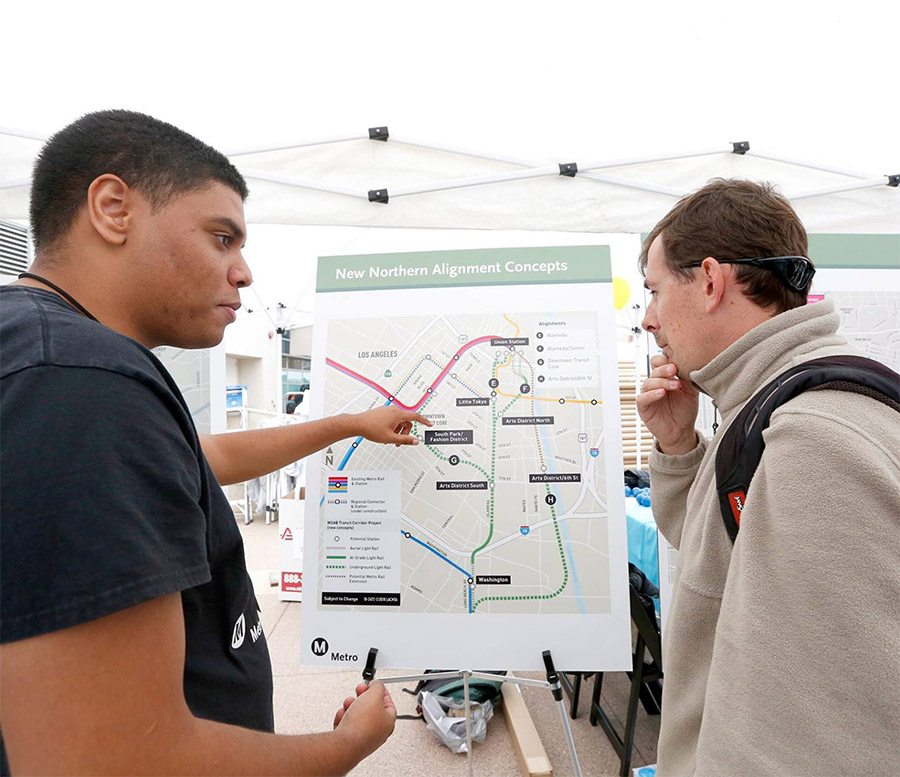
The New and Improved ETOD Calculator
What is ETOD and Why it Matters CNT has been advocating for transit oriented development (TOD) for more than 25 years. TOD looks like dense, pedestrian-friendly, mixed-use projects near train stops that allow people to use transit to access multiple needs like housing, jobs, education, shopping, healthcare etc, reducing their time spent on travel and reducing greenhouse gas emissions. However, as TOD has been rolled out, many Black and Brown, low-income communities have been either... Read the rest of this entry »
CNT Develops Mobile Web App for Walkability Assessments
The Consortium to Lower Obesity in Chicago Children (CLOCC) has been partnering with community-based organizations (CBOs) for more than a decade to identify and address barriers to walkability in their neighborhoods. To do this, CLOCC developed their Neighborhood Walkability & Accessibility Assessment Tool (NWAAT), first as a paper and later as an on-line survey tool, providing CBOs with an instrument to gather data used to support their requests to the City of Chicago for local... Read the rest of this entry »
From Screen Time to Real Time: Understanding Southeast Side stories through today's oral histories
As data analysts and policy professionals, we spend a lot of time at our desks and behind screens, analyzing quantitative data, active or proposed policies and programs, and various written reports and documents. Much of what we analyze and review is -- or becomes -- an aggregation and anonymization of specific places, experience, and impacts, and fails to directly capture the intricacies of an individual’s lived experience. In our work with community-based partners, we’ve committed... Read the rest of this entry »
The Problems With the justice40 Screening Tool, and Some Ideas for How to Improve It
The Center for Neighborhood Technology (CNT) has been a strong supporter of the concept of Justice40 since its announcement in early 2021. The goal of this program is to direct at least 40% of the benefits of federal investment to communities that have historically been left behind. Defining those communities is critical, and the federal government attempted this with the release of the Climate and Economic Justice Screening Tool in February 2022. Generally, the federal definition of... Read the rest of this entry »
Working With CBOs for Transportation Equity
Decisions by transportation agencies have often harmed communities that have not been in positions to advocate for themselves or contribute to decision making. Increasingly, the leaders and staff of transportation agencies recognize this problem and are looking for approaches to improve equity in their transportation decisions. We often hear them ask: “We recognize the need to commit to equity. BUT HOW?” While there is more than one answer to this question, one approach has proven to deliver... Read the rest of this entry »
Authentic Collaboration: Critical to Equitable Outcomes
Little Village Environmental Justice Organization (LVEJO), an environmental justice (EJ) organization based in the Little Village neighborhood, and Center for Neighborhood Technology (CNT), a research and data analytic planning organization in Chicago, are creating a Geographic Information Systems (GIS) 101 Toolkit for EJ organizations to help them conduct basic mapping and analysis. Throughout toolkit development, the Milwaukee-based EJ organization Milwaukee Water Commons (MWC) is testing to... Read the rest of this entry »
Public Agencies are Driving Equity in All Transportation Policy Decisions, Acknowledging More Work Must Be Done
Decisions in the transportation field have often harmed Black and brown communities: for example, freeway construction destroying Black and brown neighborhoods, federal funding policies for public transit that favor rail expansion to affluent suburban communities rather than urban transit service improvements, land use decisions that focus on polluting truck traffic in communities of color, and inequitable traffic law enforcement. To advance equity, we need to push transportation decisions... Read the rest of this entry »
The Case for More Operations Funding for Transit
The Bipartisan Infrastructure Bill has been passed by the Senate. That’s an excellent start in addressing our long-neglected physical infrastructure. And now the bill goes back to the House of Representatives for concurrence. In the regular order of business, the House would negotiate and then concur with amendments made in the Senate. But this bipartisan deal did not follow the normal process, essentially negating the ability of House members to negotiate. This is... Read the rest of this entry »
Residents Participate in Urban Flooding Data Collection Efforts
The Urban Flooding Baseline Project seeks to clearly define the problem of urban flooding in the Calumet region using available quantitative data sources and first-hand pictorial data from residents to improve flood mitigation plans. At the end of July, we completed the Pilot and Phase 1 of the resident data collection. Each resident data collection leader is assigned a 1.5 mile x 1.5 mile region in the communities for Dolton, Dixmoor, Harvey, Markham, Phoenix, Posen, or Riverdale and is... Read the rest of this entry »
Public Transportation's Impacts on Greenhouse Gas Emissions
Public transportation is a climate solution, and CNT’s recent report for the Transit Cooperative Research Program (TCRP) shows what an important role it plays in controlling emissions nationwide. Public transit in the U.S. saved 63 million metric tons of carbon dioxide equivalent (MMT CO2e) emissions in 2018—the equivalent of taking 16 coal power plants offline for a year. The new report, TCRP Research Report 226: An Update on Public Transportation's Impacts on Greenhouse Gas... Read the rest of this entry »





 Strengthening Transit Through Community Partnerships
Strengthening Transit Through Community Partnerships








